Cloudpital # 1 is one of the top HIS in the field of healthcare and is influenced by a variety of developments that are changing the way healthcare organizations collect data, manage, analyze and make use of health information to improve the quality of care provided to patients results, experiences, and outcomes. These changes reflect advances in technology, shifts in health delivery models, the changing regulations, changing expectations for patients, and new needs in the field of healthcare. Here’s a summary of the main trends that will shape the future of HIS systems in the field of healthcare:
Click to Start Whatsapp Chatbot with Sales
Mobile: +966547315697
Email: sales@cloudpital.com
Cloudpital # 1 HIS

What trends are shaping evolution of HIS systems in healthcare?
Interoperability, as well as Data Exchange
Interoperability is a key element in the development of HIS systems, which allows seamless data exchange and communication between disparate healthcare systems, providers and other stakeholders. Standardized protocols, data formats, and interfaces, like Fast Healthcare Interoperability Resources and Health Level Seven provide interoperability, and allow the integration of information taken from electronic medical records as well as healthcare devices, wearables and other sources that support coordinated medical decision-making, care, and management of health for populations.
Cloud Computing and Data Storage
Cloud computing is revolutionizing the ways HIS systems are implemented and managed providing healthcare organizations more flexibility, scalability and cost-effectiveness. Cloud-based HIS solutions are security, reliability accessible, and easily accessible storage for massive amounts of health data that allow real-time access, collaboration and analytics across multiple healthcare settings. Cloud infrastructure can also support disaster recovery, backup of data as well as conformity with regulatory requirements like HIPAA. Health Insurance Portability and Accountability Act (HIPAA).
Artificial Intelligence (AI) and Machine Learning
Artificial intelligence and machine learning revolutionize HIS systems through the use of sophisticated analytics and predictive models and decision-support capabilities. AI-powered algorithms analyze large amounts of data to find patterns that reveal trends, trends, and patterns which inform clinical decision-making stratification of risk, and population health management. The ML algorithms can also automate repetitive tasks, increase the accuracy of diagnostic tests, and improve the allocation of resources, ultimately improving efficiency of quality, outcomes, and efficiency in the delivery of healthcare.

What trends are shaping evolution of HIS systems in healthcare?
Telehealth as well as Remote Monitoring
The COVID-19 epidemic has increased the use of remote monitoring and telehealth technologies, which has led to an integration of remote health features into the HIS system. Telehealth platforms allow Telemedicine providers to offer consults remotely, as well as follow-ups and monitoring through video conference, secure messaging, and mobile apps. Remote monitoring solutions make use of sensors, wearables, and IoT devices to gather real-time health information and send the data through HIS platforms for analysis. allowing targeted interventions and individualized health management.
The consumerization of healthcare
The rise of the shift in healthcare’s consumerization is shifting the in the direction of patient-centric healthcare delivery models, empowering patients to play an active part in managing their health and well-being. Health information systems are changing to incorporate the needs of patients like patient portals mobile apps, patient portals, and online scheduling tools that let patients access their medical records, interact with their health care providers and take part in decisions that are shared. Individualized health information such as educational resources, health information, and self-management tools assist individuals in making educated decisions and improving their health outcomes.
Population Health Management
Health management of the population (PHM) tactics are driving development of HIS systems toward proactive prevention, holistic, and preventive strategies for health care delivery. PHM modules inside HIS systems combine analysis, stratify, and analyze information on patients to determine risky populations, care gaps and the potential for intervention. Risk models for prediction and tools for coordination of care and care management protocols allow healthcare providers to design and implement specific intervention, screenings for preventive or health education programs that enhance the health of patients and decrease the cost of healthcare.
Payer-based models and Value-Based Care
Transition from fee-for-service to value-based health as well as payment model is affecting the development of Appointments Scheduling, with a focus on outcomes as well as quality and satisfaction with the quantity of services. Value-based care demands HIS systems to collect the data, monitor and provide reports on the quality of metrics, outcomes for patients and cost-efficiency metrics to show value and performance. Care coordination integrated as well as care management and health for the population capabilities allow healthcare organizations to thrive in the value-based reimbursement model through improving coordination of care while reducing unnecessary usage and improving the quality of patient care.
Information Security as well as Privacy
Increased concerns regarding privacy and security of data have prompted the evolution of HIS systems to focus on high-quality security measures as well as access controls, encryption standards and audit trails that safeguard sensitive health data. HIS systems incorporate advanced security options that include multi-factor authentication, encryption of data and access controls based on role and blockchain technology, in order to protect patient confidentiality, integrity and accessibility. Conformity to regulations, like those of the Health Insurance Portability and Accountability Act (HIPAA) and compliance with industry standards will ensure that HIS systems adhere to the highest standards of data security and privacy.
population Health Data Analytics
Data Analytics for Population Health: The increasing necessity of using data analytics to improve the field of healthcare is influencing the development of HIS systems towards more advanced analytics capabilities to support healthcare management for the population, prediction modeling and clinical decision-making support. HIS systems make use of big data analytics methods, data mining techniques as well as predictive models to analyse massive amounts of unstructured and structured information and identify actionable insights and provide evidence-based guidelines for the delivery of care resources, resource allocation, and quality improvements. Real-time dashboards and performance metrics and benchmarking tools allow healthcare organizations to track the progress of their programs, monitor outcomes, and ensure continuous improvement in healthcare management for the entire population.
Regulation Compliance and Reporting
Compliance with regulations with reporting and compliance requirements will continue to influence the development of HIS systems, influencing the creation of interoperable standards, protocols for data exchange, as well as reporting capabilities. HIS systems help in ensuring compliance with the regulatory requirements for example Meaningful Use (MU), the Medicare Access and CHIP Reauthorization Act (MACRA) as well as the 21st Century Cures Act, by capturing, documenting and reporting about quality indicators and requirements for clinical documentation, as well as electronic health data exchange requirements. Audit logs, automated reporting systems and compliance modules facilitate the process of reporting to regulators, ease administrative burdens, and assure conformance to the regulations and standards.
Conclusion
In the end, the development of Health Information Systems (HIS) in the field of healthcare is determined by a fusion of trends which reflect technological advances and the delivery of healthcare, changing regulatory requirements, changing expectations of patients, and the emergence of new health care priorities. Cloud computing, interoperability, AI, Telehealth health care consumerization and population health management value-based healthcare, data security, analysis of health data for the population along with regulatory compliance drive the evolution of HIS systems to help support patients-centered care, improve outcomes, and reach the goal of a connected, data-driven health ecosystems. By taking advantage of these trends and harnessing technology to its fullest healthcare providers can boost healthcare delivery, improve utilization of resources, and improve the patient experience and outcomes.
Click to Start Whatsapp Chatbot with Sales
Mobile: +966547315697
Email: sales@cloudpital.com
What trends are shaping evolution of HIS systems in healthcare? similar software solutions prices were updated on 2024-05-08T16:07:47+00:00 in Saudi Arabia in Mecca, Medina, Riyadh, Khamis Mushait, Yanbu, Jeddah, Dammam, Unaizah, Uqair, Ha’il, Ta if, Al Bahah, Dhahran, King Abdullah Economic City, Najran, Diriyah, Qatif, Khafji, Jubail, Abqaiq, List of Cities and Towns in Saudi Arabia, Ras Tanura, Turubah, Jazan Economic City, Knowledge Economic City, Medina, Khobar, Abha, Tabuk, Saudi Arabia, similar software solutions prices were updated on 2024-05-08T16:07:47+00:00 We also provide in Saudi Arabia services solutions company in Hafar Al-Batin, Udhailiyah, Al-Awamiyah, Hofuf, Hautat Sudair, Buraidah, Tayma, Duba, ‘uyayna, Saihat, Al-Kharj, Al-ula, Jizan, Rumailah, Ar Rass, Arar, Shaybah, Al Majma’ah, Rabigh, Dhurma, Haradh, List of Saudi Cities by Gdp Per Capita, Badr, Sudair Industrial City, Baljurashi, Shaqraa, Al-Khutt, Habala, Ad Dawadimi, Dawadmi, Layla, similar software solutions prices were updated on 2024-05-08T16:07:47+00:00 Price is SAR 100 and this was updated on updated on 2024-05-08T16:07:47+00:00 similar What trends are shaping evolution of HIS systems in healthcare? software solutions prices were updated on 2024-05-08T16:07:47+00:00 in Saudi Arabia in Haql, Afif, Al-Abwa, Farasan, Al-Jaroudiya, Thadig, Al-Thuqbah, Al Wajh, Almardmah, Al-Zilfi, Muzahmiyya, Prince Abdul Aziz Bin Mousaed Economic City, Tharmada’a, Skaka, Um Al-Sahek, Sharurah, Tanomah, Bisha, Dahaban, Al Qunfudhah, Qurayyat, Saudi Arabia, Ha’ir, as Sulayyil, Al Lith, Turaif, Al-Gway’iyyah, Samtah, Wadi Ad-Dawasir, Az Zaimah, Safwa City, Jalajil, Harmah, Mastoorah, Hotat Bani Tamim, Jabal Umm Al Ru’us, Rafha, Qaisumah, Al-Ghat, Hajrah, Al-Hareeq. Excerpt: Jeddah (also spelled Jiddah, Jidda, or Jedda; Arabic: Jidda) is a Saudi Arabian city located on the coast of the Red Sea and is the major urban center of western Saudi Arabia similar software solutions prices were updated on 2024-05-08T16:07:47+00:00 Price is SAR 100 and this was updated on updated on 2024-05-08T16:07:47+00:00
2-2-2024



